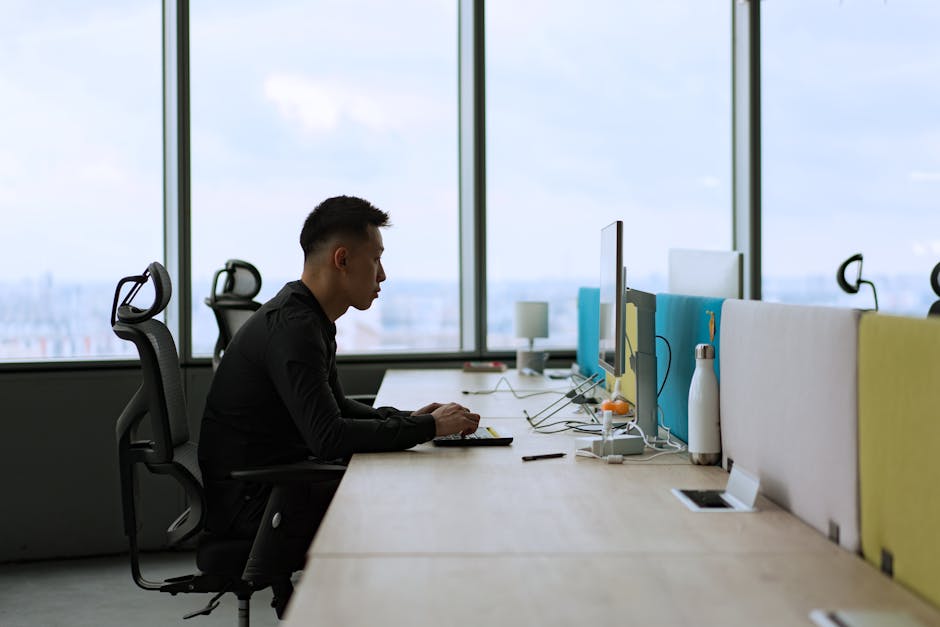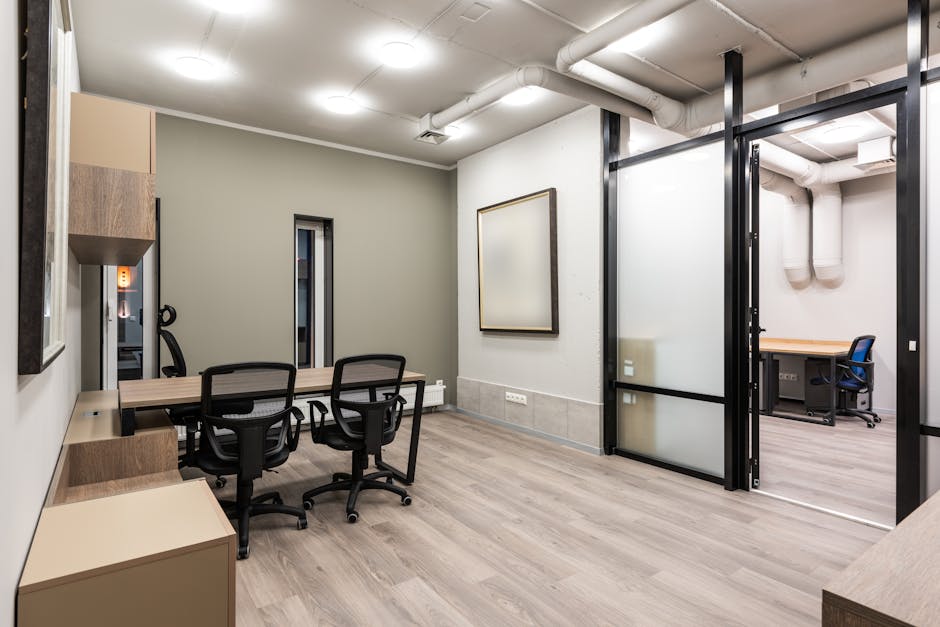Balancing Privacy in the Modern Workplace: Creating Spaces that Empower Employees
“In today's open office environments, employee privacy has become a critical concern affecting productivity, satisfaction, and wellbeing. This article explores how organizations can design workspaces that offer the right balance of privacy and collaboration, giving employees control over their environment while supporting various work styles. ”

Balancing Privacy in the Modern Workplace: Creating Spaces that Empower Employees

Picture this: After a long day at work, you arrive home with your ears still ringing from constant office chatter, the feeling of wandering eyes tracking your computer screen, and the uncomfortable awareness of colleagues breathing down your neck. You're desperately craving privacy—a moment of solitude to decompress and reset. This scenario has become all too familiar for employees working in modern office environments where privacy often takes a backseat to collaboration.
The lack of privacy in today's workplace isn't just an inconvenience—it's a significant factor affecting employee productivity, satisfaction, and overall wellbeing. When organizations fail to design spaces that allow for appropriate levels of privacy, employees end up feeling overstimulated, overexposed, and constantly scrutinized.
Why Privacy Matters in the Workplace
Privacy at work goes beyond simply having a quiet place to concentrate. It encompasses several dimensions:
- Visual privacy: Protection from being constantly observed
- Acoustic privacy: Freedom from distracting noise and conversations
- Spatial privacy: Having personal space that feels secure and controlled
Research published in the Harvard Business Review indicates that employees need a sense of authority over their daily experience to maintain satisfaction and engagement. Without this control, workplace satisfaction inevitably suffers, leading to decreased productivity and potentially higher turnover rates.
The key to creating an effective workplace environment lies in providing employees with control over their privacy levels throughout the day. This empowerment allows individuals to adjust their environment based on their changing needs and work requirements.
The Spectrum of Workplace Privacy

Every workplace has a unique culture and attracts different personality types. Even within a single organization, you'll find employees with varying preferences for privacy and collaboration. More importantly, individual needs shift throughout the workday depending on:
- The type of work being performed
- Energy levels and focus capacity
- Mood and personal preferences
- Collaboration requirements
The most effective approach to accommodating these diverse and changing needs is to offer a spectrum of spaces that employees can freely choose from based on their requirements at any given moment. This concept aligns with workplace strategy models like activity-based working, which provides employees with multiple environment options.
Understanding Employee Work Styles
During a typical workday, employees engage in various types of work that require different levels of privacy:
- Individual focused work: Requires concentration and minimal distractions
- Unstructured collaboration: Spontaneous interactions with colleagues
- Structured group work: Planned meetings and formal collaboration sessions
Each of these work styles benefits from different environmental conditions. The challenge for organizations is creating a workplace that supports all these modes effectively.
The Privacy Matrix: Matching Spaces to Work Styles
When examining workplace environments, we can categorize spaces along a privacy spectrum:
Completely Private Spaces
- Private offices
- Phone booths
- Focus rooms
- Advantages: Minimal distractions, confidentiality
- Limitations: Can feel isolating, limited collaboration opportunities
Semi-Private Areas
- Huddle zones
- Lounge areas with high-back seating
- Booth seating
- Advantages: Flexibility, balance of focus and accessibility
- Limitations: May still have some noise transfer
Completely Exposed Areas
- Open desk areas
- Communal tables
- Traditional open office layouts
- Advantages: Collaboration, team visibility
- Limitations: Constant distractions, lack of privacy

The spaces at either end of this spectrum—completely private and completely exposed—often deprive employees of control over their environment. They're forced to be either entirely solitary or completely exposed with limited options to modify their surroundings.
Semi-private areas, however, offer the greatest flexibility by allowing employees to opt in or out of privacy in multiple ways. These "thirdspaces" empower individuals to adjust their environment according to their immediate needs.
The Power of Semi-Private Workspaces
Semi-private areas stand out as particularly valuable because they support virtually every type of work while giving employees control over their privacy levels. In these spaces, employees can:
- Choose whether to work in the space at all, since these are often flexible areas rather than assigned workstations
- Position themselves strategically (e.g., with their back to a wall) to control screen visibility
- Signal their availability for interaction through body language or tools like headphones
- Accommodate different work styles from focused individual work to impromptu collaboration
For example, while you can't effectively hold a brainstorming session in a cubicle or find reliable privacy in an open floor plan, semi-private areas allow for both scenarios. You might roll a whiteboard into a huddle zone for a quick team discussion or find a sheltered lounge chair facing away from foot traffic for focused work.
Creating a Traffic Light System for Privacy

Another helpful way to conceptualize workplace privacy is through a traffic light analogy:
- Red zones (private spaces): Signal "stop" to interactions, prioritizing focus and confidentiality
- Yellow zones (semi-private areas): Indicate "yield," where employees determine when and how interactions occur
- Green zones (exposed areas): Represent "go," encouraging open collaboration and communication
Similar to traffic lights, each color implies appropriate behaviors within the office setting. The yellow zones are particularly valuable because they put control in employees' hands—they can either opt into or out of interactions based on their needs at that moment.
This yielding concept suggests an imminent choice rather than a predetermined state. When employers create workplaces where employees can choose how, when, and where they work, it establishes a foundation of trust between the organization and individual. This trust gives employees a sense of confidence and control over their environment.
Implementing Privacy Solutions in Your Workplace
To enhance privacy in your workplace while maintaining a collaborative culture, consider these practical strategies:
1. Conduct a Privacy Audit
Start by assessing your current workspace to identify privacy gaps:
- Survey employees about their privacy needs and concerns
- Map out the different types of work being performed
- Evaluate existing spaces for privacy capabilities
2. Create a Diverse Ecosystem of Spaces
Develop a variety of workspace options that support different privacy needs:
- Designate quiet zones for focused work
- Establish collaboration areas for team activities
- Create transitional spaces that can flex between privacy levels
3. Empower Employees Through Choice
Give employees the autonomy to select their work environment:
- Implement a flexible workplace policy that encourages movement between spaces
- Provide clear guidelines on how different areas should be used
- Offer training on how to maximize the available spaces
4. Incorporate Privacy-Enhancing Design Elements
Use physical design elements to create privacy without building walls:
- Acoustic panels and sound-masking technology
- Strategic furniture placement and high-backed seating
- Plants and dividers to create visual barriers
- Adjustable screens and movable partitions
5. Establish Privacy Protocols
Develop cultural norms that respect privacy needs:
- Create signals for when someone shouldn't be disturbed
- Establish etiquette for shared spaces
- Recognize and respect different working styles
The Goldilocks Principle of Workplace Privacy
If Goldilocks walked into your office, would she find a homogenous sea of exposed workstations, entirely secluded private offices, or a mix of customizable, flexible workstations that are "just right" for employee privacy?
The most effective workplaces strike a balance between privacy and collaboration, offering a variety of spaces that employees can customize to fit their work style and comfort level. This approach acknowledges that privacy isn't one-size-fits-all but rather a dynamic need that changes throughout the day.
By creating environments that empower employees to control their level of privacy, organizations demonstrate trust in their workforce while supporting productivity and wellbeing. The result is a workplace where employees feel respected, comfortable, and equipped to do their best work.
Conclusion
Privacy in the workplace isn't about isolating employees or reverting to closed office designs. Rather, it's about creating a thoughtful balance of spaces that support the full spectrum of work activities while giving employees control over their environment.
By offering a variety of workspaces—from fully private to completely open, with an emphasis on flexible semi-private areas—organizations can create environments where employees thrive. When people feel empowered to choose the right level of privacy for their tasks, they experience greater satisfaction, improved focus, and enhanced wellbeing.
In the end, workplace privacy isn't just about physical space—it's about respecting employees' needs and trusting them to work in ways that best support their productivity and comfort. By designing with this principle in mind, organizations can create workplaces that truly work for everyone.